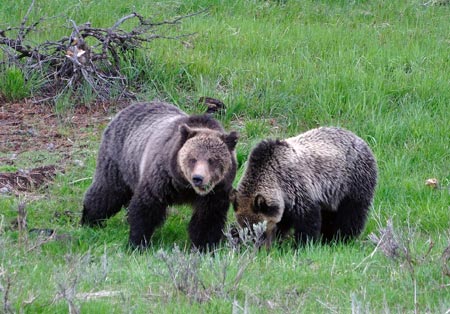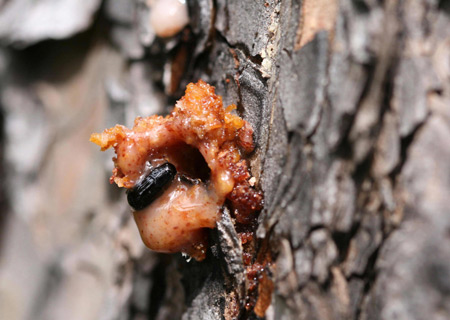Picture a creature weighing as much as 720 lbs., roaming vast expanses of the American West — top of the food chain and king of the Rocky Mountains, embodying freedom and the spirit of the West. If you were picturing the grizzly bear, then, we’re on the same page. This is how many people picture this iconic animal of the West. But just three decades ago the actual picture was quite a bit different. Grizzlies were in dire straits. The population in the Greater Yellowstone Area (GYA) had shrunk to only 136 bears, roaming a measly (by grizzly bear standards) five million acres. After decades of teetering on the brink, in 1975, the grizzly bear was listed as endangered in the lower 48 states.


Today, the GYA population has grown. In 2010, there were 602 bears, including 51 mothers with 101 cubs — a future generation looking strong. The bears now roam 14 million acres in the GYA and have begun to reoccupy areas outside of the recovery zone. For around a decade, grizzles have met criteria for delisting. The Greater Yellowstone Coalition has called their story “one of the great conservation success stories of our time.”
So why is the grizzly still listed as threatened? The answer lies with another creature of the American West.
In 2007, the grizzly bear was, in fact, delisted. The decision was challenged and two years later a federal judge’s ruling reinstated their status as threatened. One of the primary reasons for the judge’s ruling was the U.S. Fish and Wildlife Service’s (FWS) lack of due consideration in their decision of a new threat to the grizzly — the mountain pine beetle.
Yes, that’s right. Beetle vs. grizzly bear. It may not sound like the most interesting National Geographic video clip, but the mountain pine beetle has emerged in recent years as one of the grizzly’s biggest indirect threats due to the devastation it’s been causing a major grizzly food source.
Packing more calories than chocolate, the seeds of the whitebark pine are a favorite among the bears. But as the changing climate allows the beetles to move into higher and higher elevations and to live longer and longer without the cold winter days needed to regulate their life cycle, the high-elevation whitebark pine — less accustomed to the beetles than some lower elevation pines — is paying the price. And as the pines suffer, the grizzlies suffer.
And once again, the bear’s status is being examined. 2014 could very well be the year of their delisting. FWS is closely evaluating the whitebark pine situation to assess how it may affect the grizzly’s conservation status. Will the grizzly bear fall before the mighty pine beetle? Unless we can mitigate some of the problems facing our endangered western forests, the grizzly bear’s inspiring comeback may be short lived.
So, what can be done? Through our Endangered Western Forests initiative, American Forests is taking a six-pronged approach to combating these threats to the grizzly bear’s ecosystem through restoration, research, local engagement, policy promotion, funding and education. In addition to advocating for continued protection of the grizzly bear, our strategies include applying pheromone patches to discourage beetles from infesting high-impact trees. Learn more about our strategies and how you can help.